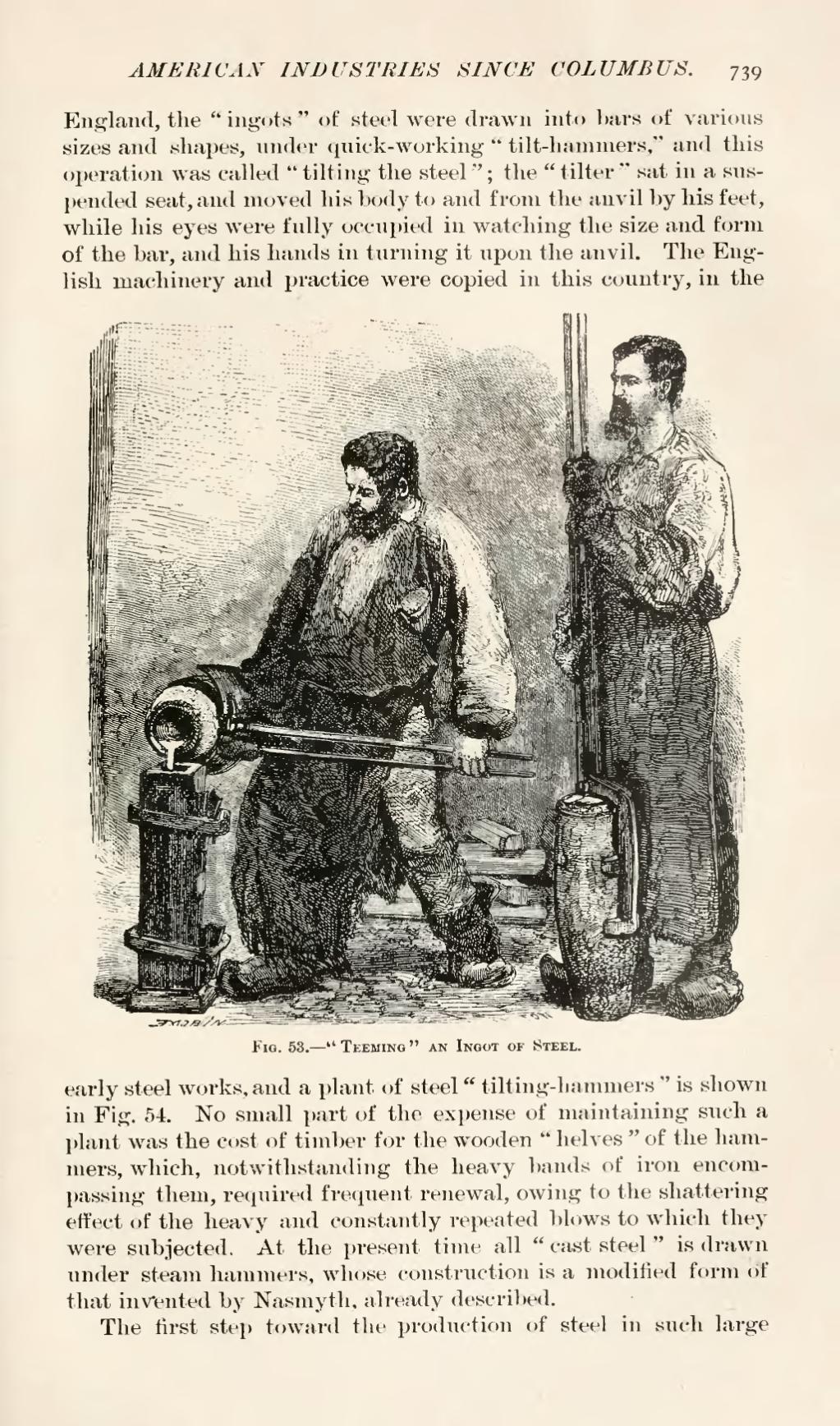England, the "ingots" of steel were drawn into bars of various sizes and shapes, under quick-working "tilt-hammers," and this operation was called "tilting the steel"; the "filter" sat in a suspended seat, and moved his body to and from the anvil by his feet, while his eyes were fully occupied in watching the size and form of the bar, and his hands in turning it upon the anvil. The English machinery and practice were copied in this country, in the

Fig. 53.—"Teeming" an Ingot of Steel.
early steel works, and a plant of steel "tilting-hammers" is shown in Fig. 54. No small part of the expense of maintaining such a plant was the cost of timber for the wooden "helves" of the hammers, which, notwithstanding the heavy bands of iron encompassing them, required frequent renewal, owing to the shattering effect of the heavy and constantly repeated blows to which they were subjected. At the present time all "cast steel r is drawn under steam hammers, whose construction is a modified form of that invented by Nasmyth, already described.
The first step toward the production of steel in such large

